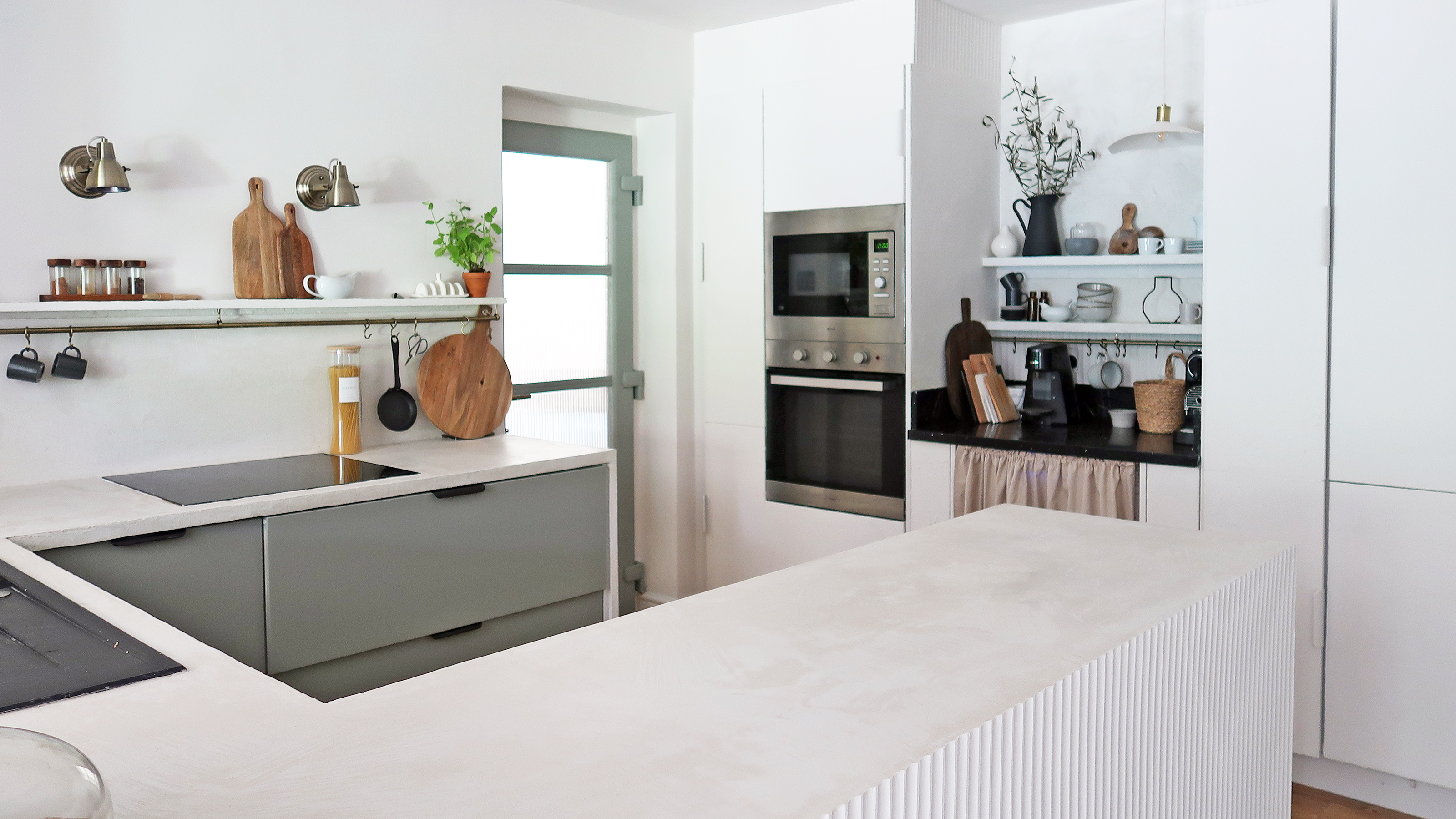

Microcementing kitchen cabinets is still quite an unusual DIY, but I predict that's about to change because it is such an easy way to transform tired cabinetry – you simply apply thin layers of a concrete-like substance onto a firm stable base.
Once dry, the microcement cures to become incredibly strong and resilient with a beautiful texture. And once sealed, microcement kitchen cabinets are strong, food-safe, waterproof and scratch-resistant.
I’ve experimented with many ways to use microcement, and it's been incredibly successful. Above, you can see how I used microcement to renovate a kitchen – it's a DIY that I completed in just a couple of days.
What you'll need to microcement kitchen cabinets
- Microcement kit, such as the SmartCret Kit at Amazon
- 2 clean buckets or containers
- A foam roller with replacement heads such as the Mister Rui Foam Paint Roller from Amazon
- Flexible spreading trowel or spatula
- Sandpaper
- A mixer paddle; the Edward Tools Paint and Mud Mixer attached to a cordless drill will make life easier
- Dust mask, gloves and dust sheets
Step 1. Gather your materials
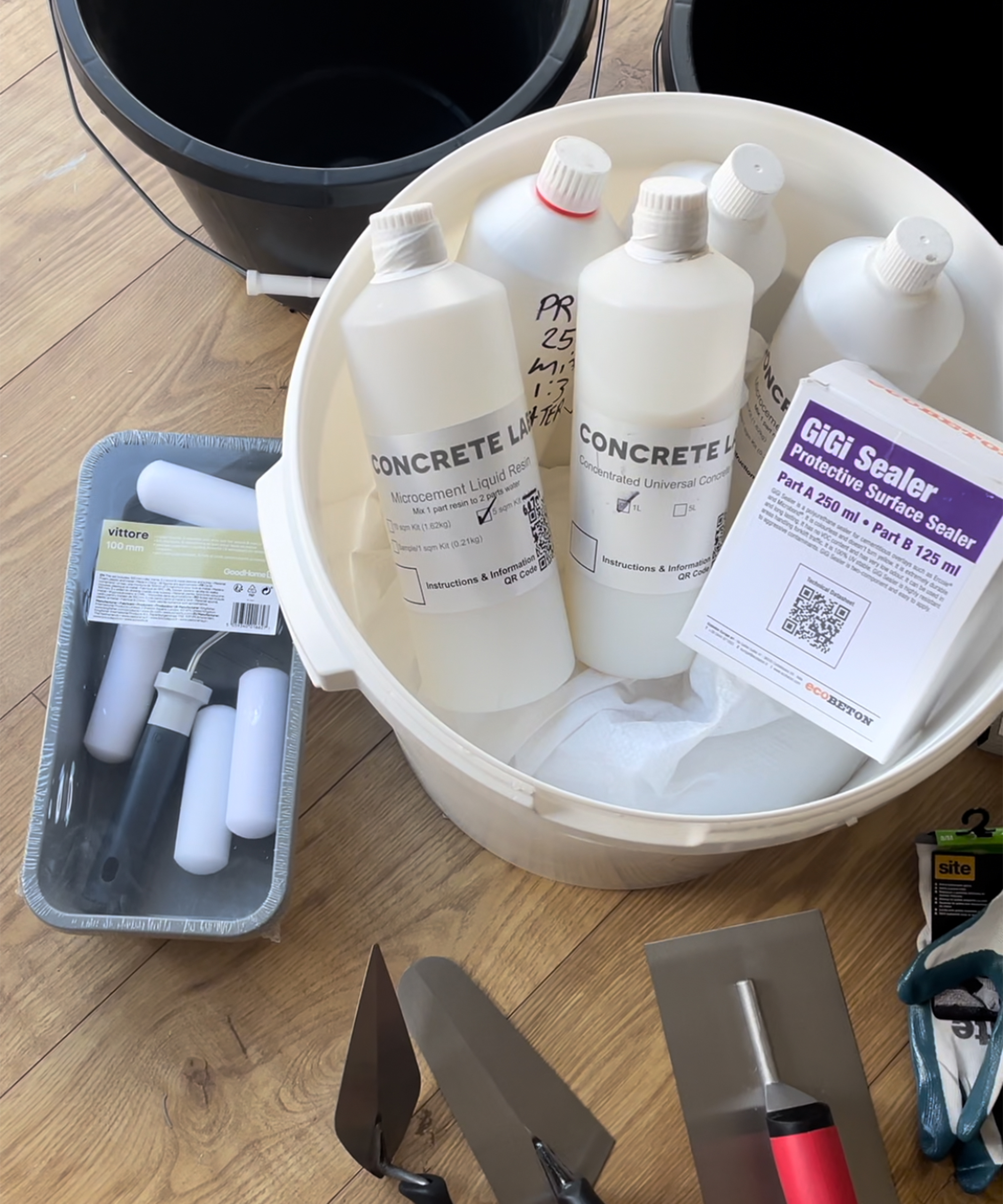
When it comes to microcementing kitchen cabinets, it's important to know where all your tools and materials are and ensure they are within easy reach. There is a time factor with microcement kitchen cabinets as the batches of microcement will 'go off' (harden) if left for too long, meaning you don't want any unnecessary delays in your DIY.
Top Tip: I learned when microcementing countertops, shelves and microcementing a backsplash to always work with clean tools, as any dried residue on your spreader or dirt in your buckets will reduce the quality of your finish.
Step 2: Prepare your cabinets
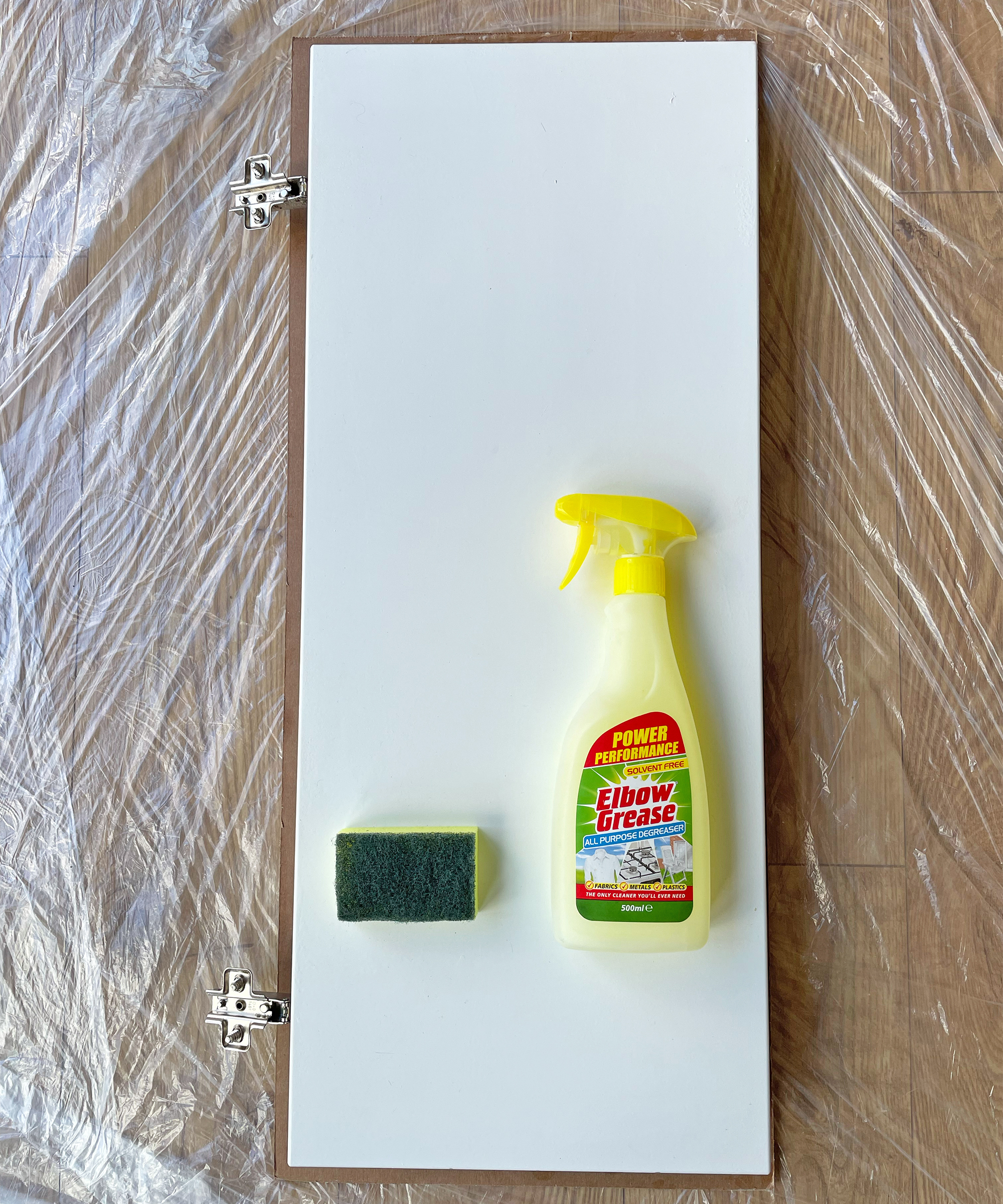
Always follow the specific manufacturer's instructions, but as a general rule, ensure the cabinets are clean, dry and sound before you start a microcementing project. Kitchen cabinets are prone to attracting grease and grime so might benefit from a stronger cleaning solution. I find Everbuild Sugar soap, available on Amazon, is a great product to get them super clean and ready.
Take the cabinet doors off by unscrewing them at the hinges with a screwdriver. All-in-1, Stanley Screwdrivers, at Amazon, are handy because they offer six tips for versatility. Lay the doors somewhere flat to work on them. I didn’t take the hinges or hardware off; this wasn’t just laziness, though; considerably thicker than paint, microcement builds up the surface and I didn’t want to then have to remove cured microcement in order to reattach the hardware. The added texture is a great way to add personality to your kitchen.
Top tip: Don't overlook the infill panels and parts of the cabinet bases that are on show, as these will all need to be cleaned in advance of the microcement process.
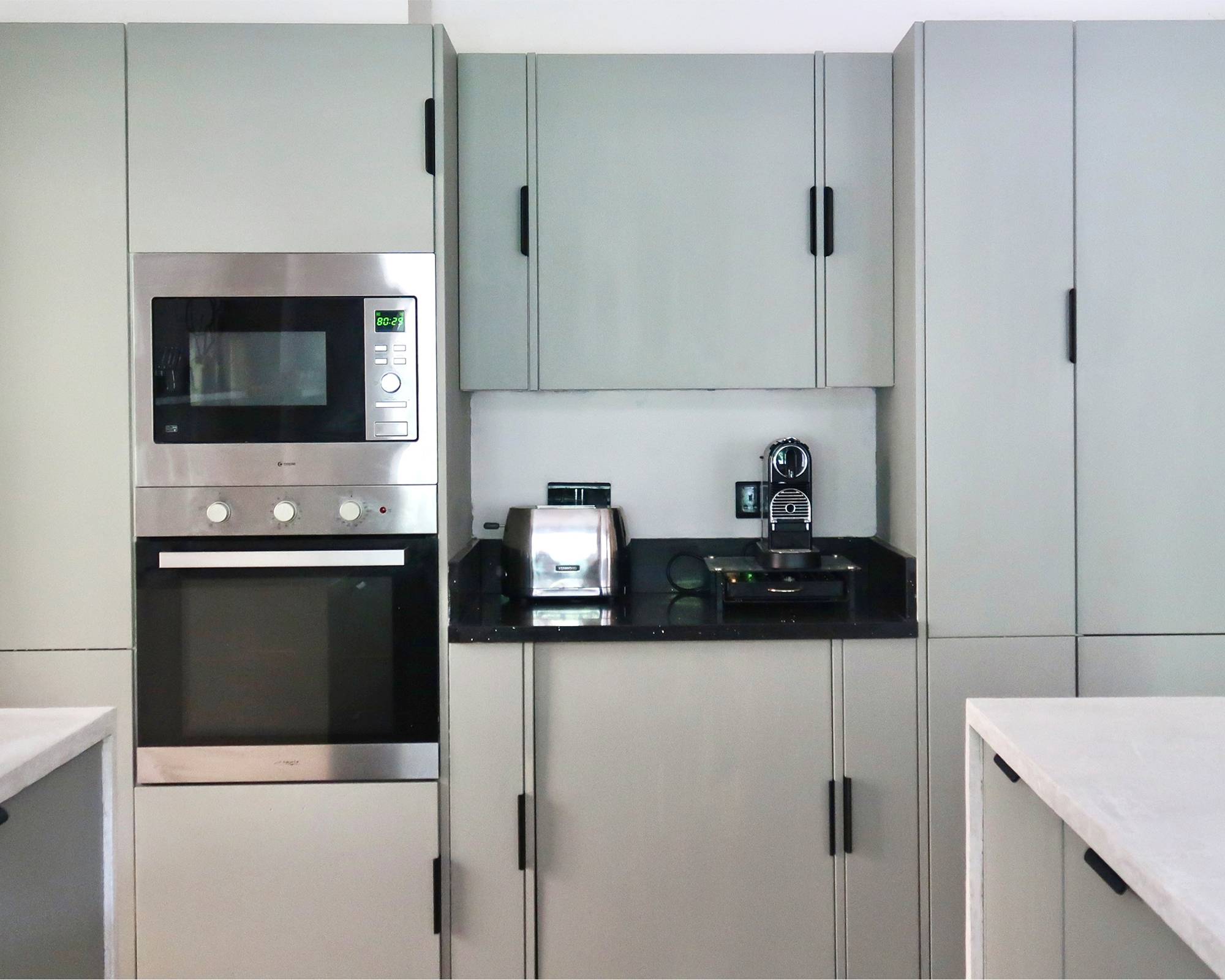
My kitchen, before microcementing
My plan was to paint the handles in the same shade as the cabinets to make them disappear (adding to the sleek minimalist look), so I didn’t worry about covering them up. I recommend taping over them to protect the handles if you aren’t planning to paint.
Before applying microcement to any surface, you must prime it first. Mix the primer according to the manufacturer's instructions and apply it to the cabinets using a foam roller.
Step 3. Mix the microcement
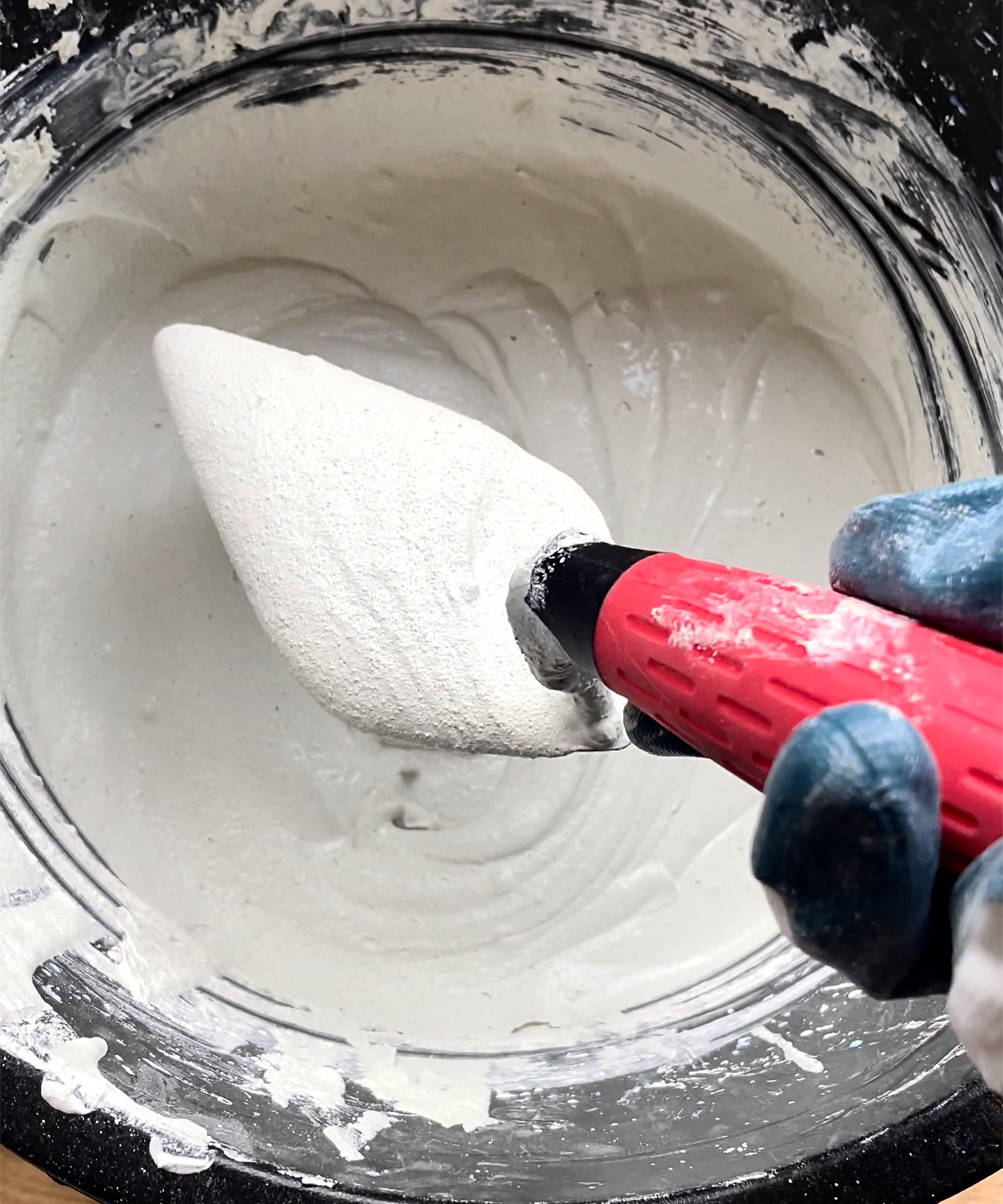
As products vary, I recommend following the manufacturer's guidelines for mixing up batches of microcement. I make up small batches rather than one large one as this gives you more flexibility with timings and makes the mixing process easier.
Use an electrical mixer makes the mixing process much more efficient. I find that paint paddle, like Amazon's Edward Tools Paint and Mud Mixer on the end of a cordless drill is ideal.
Don’t add more (or less) liquid than stated, as the consistency will affect the coarseness of the final texture.
Be sure to incorporate all the dry powder in the mix, as it can get forgotten about at the bottom of the bucket.
Step 4: Apply the first coat of microcement
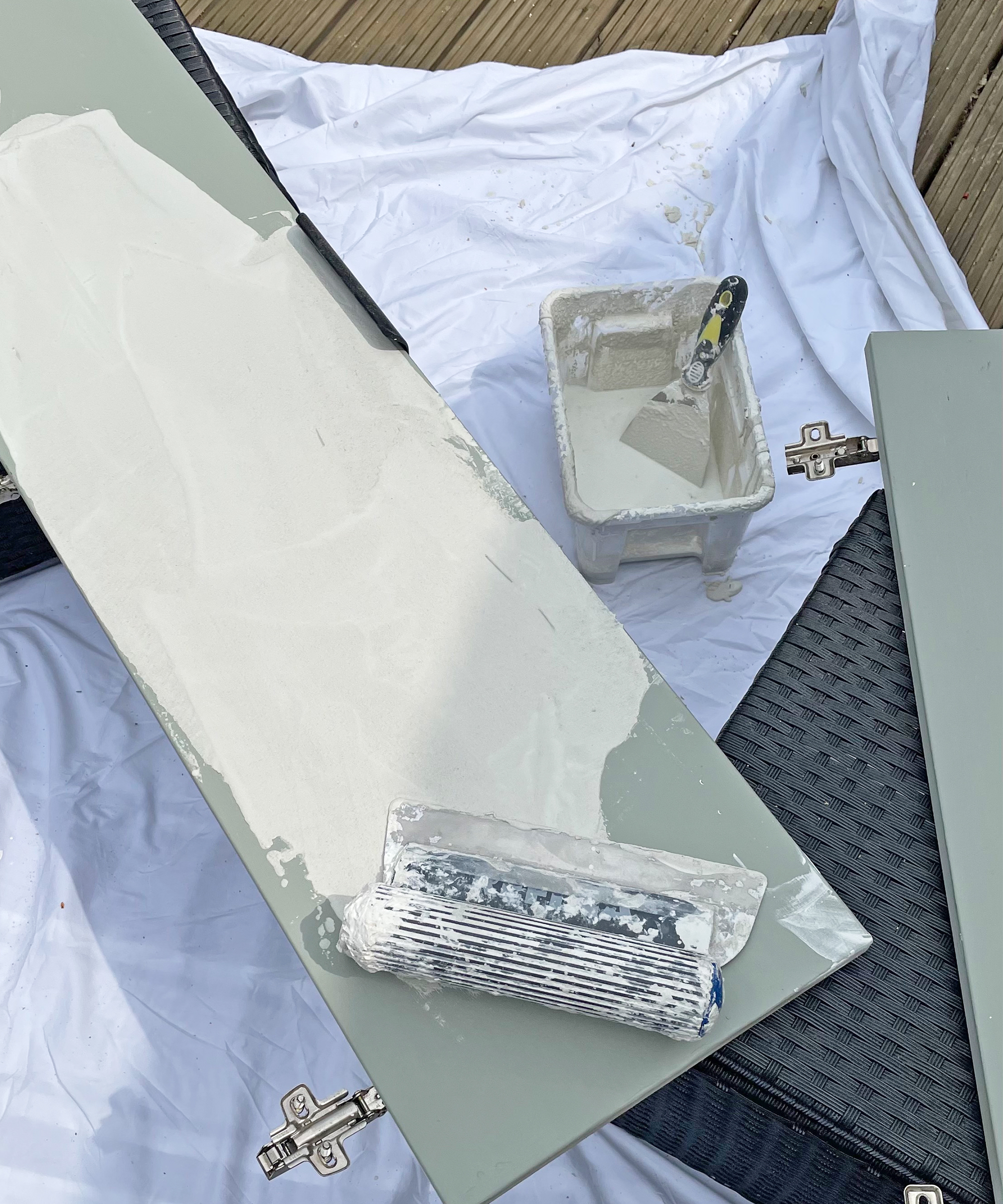
The first layer when microcementing kitchen cabinets should be approximately as thick as a layer of paint. Avoid spreading it too thin or thick, as both can lead to issues with the finish and durability. I find it much easier to cover the cabinet fronts and sides of the cabinet doors in two stages, starting with the fronts first.
You can either start in the middle and work out to the edges using sweeping motions with your spreader, or choose one end and work towards the other. Run the mixture over the edge when you cover the cabinet fronts so there aren't any gaps when you come to do the sides.
Allow to dry for a few hours then repeat the same process on the sides of the doors and drawer fronts.
You obviously can't remove the base units or infill panels, so will need to microcement these in situ. Be sure to cover the kitchen floor and countertops beforehand as microcementing can get messy.
As with most DIY kitchen ideas, you can experiment to get the exact finish you want and you'll discover what works and what doesn't.
Just a reminder: here are a few of the buys I found particularly helpful.
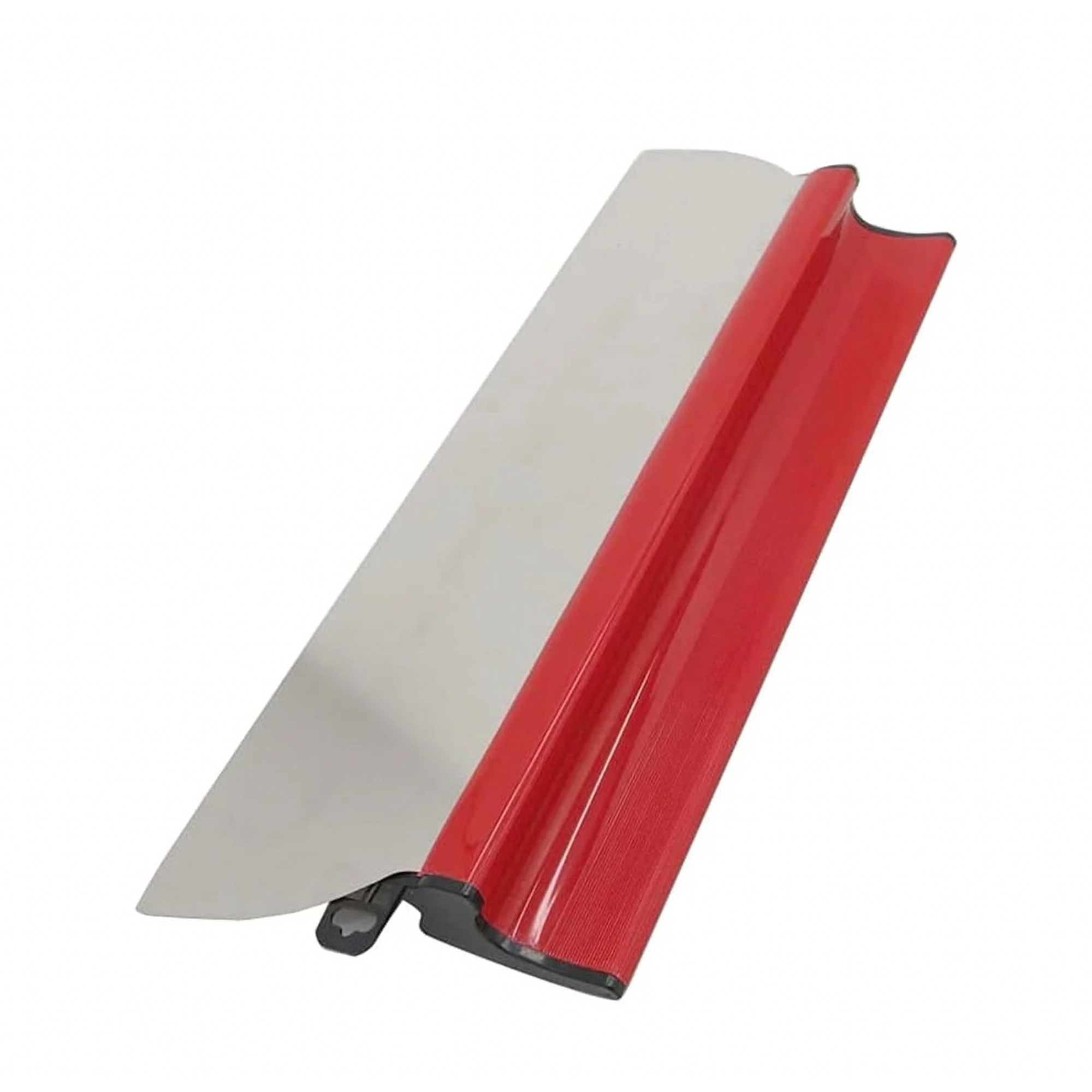
This skimming spreader is ideal for using with microcement as it's long, wide blade offers good control. The handle is ergonomic and easy to grip, useful for undertaking the sweeping motions needed for microcementing.
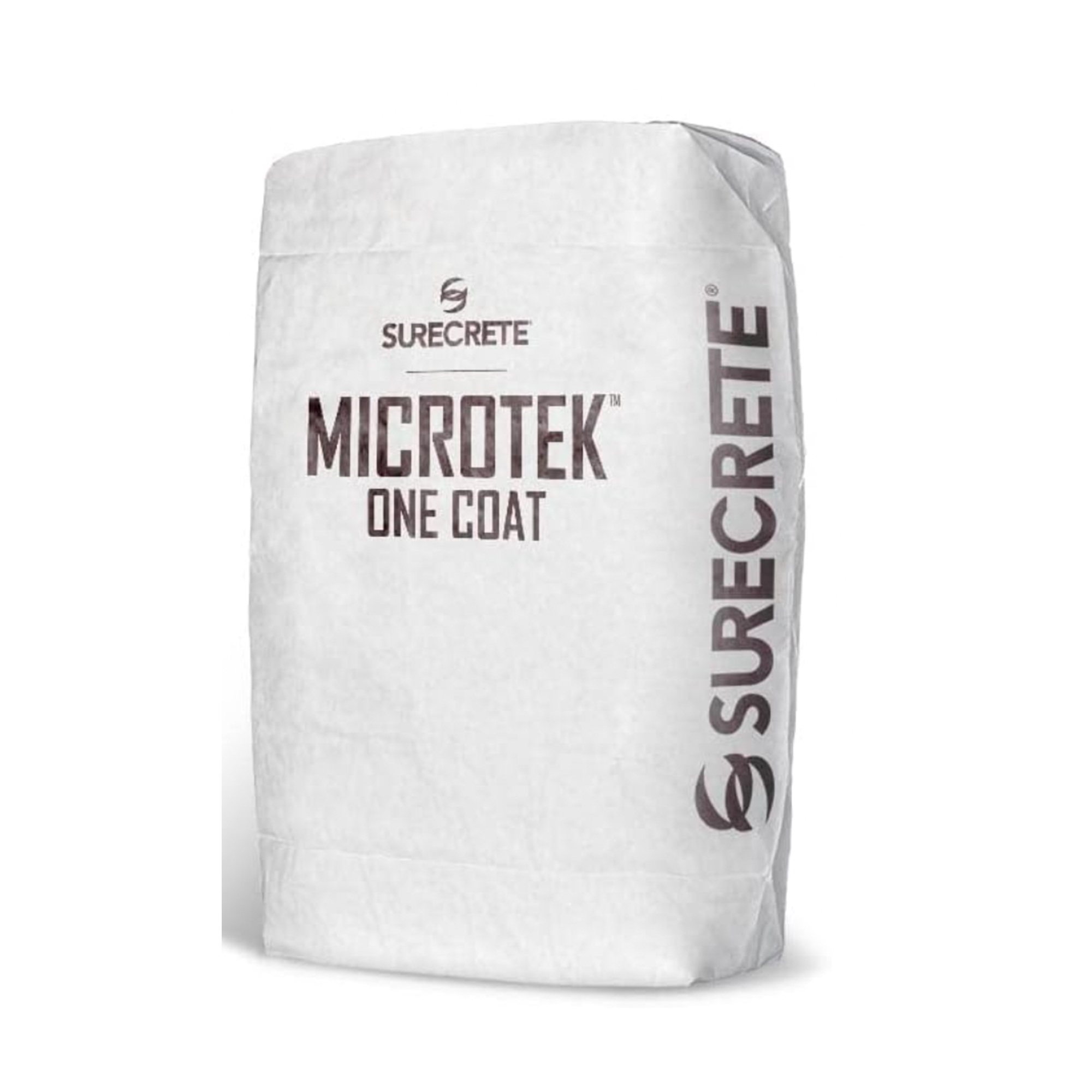
This microcement is a single-component, self-bonding, cement-based product, ideal for home DIYs. Suitable for both floor and wall applications, it would be great for creating the concrete-style textures associated with microcement.
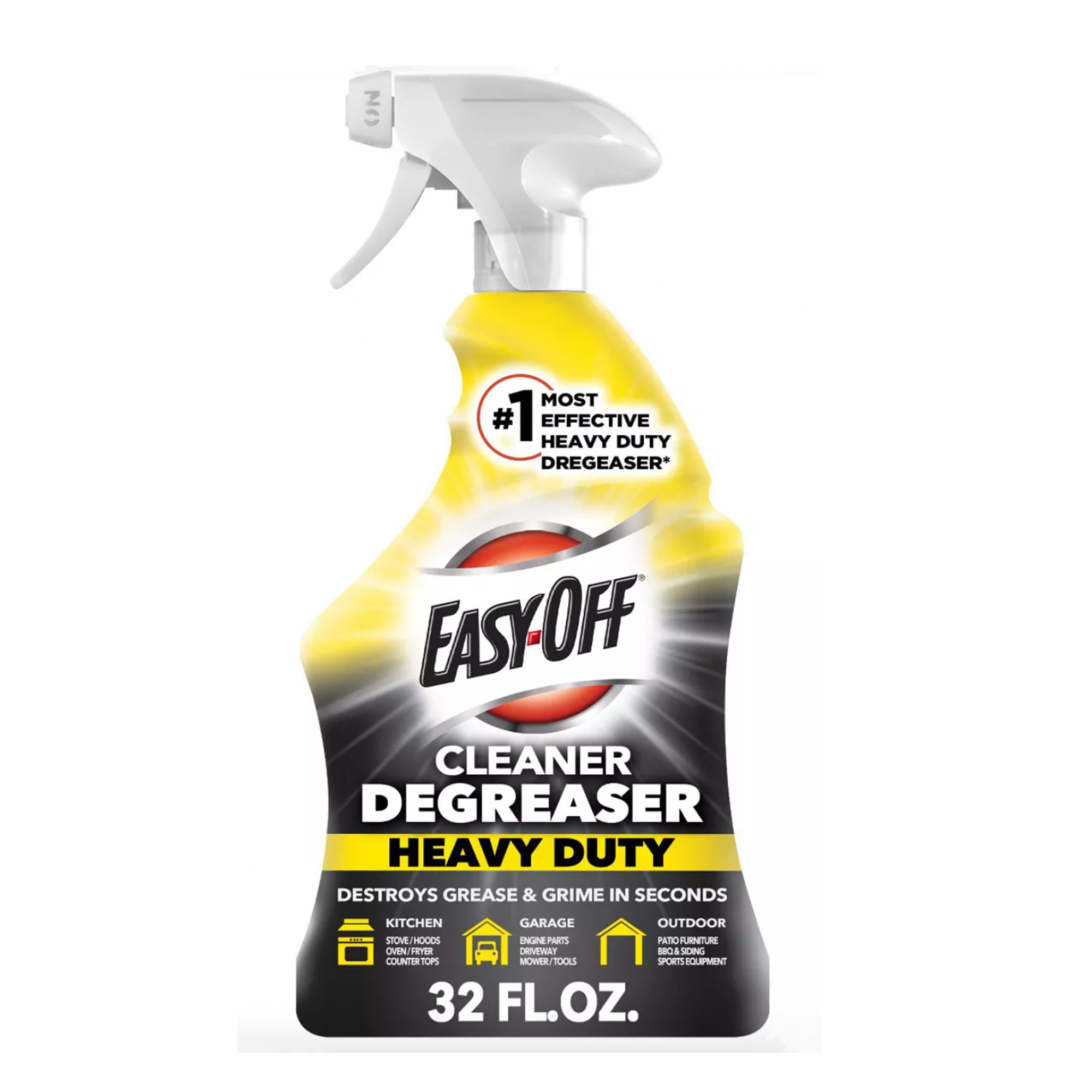
When cleaning kitchen cabinets before microcementing, you need a heavy-duty indoor/outdoor cleaner to remove layers of grease. This product would be ideal for cutting through the grease and kitchen residues to ensure a perfectly clean base.
Step 5: Prepare the cabinets for the second coat
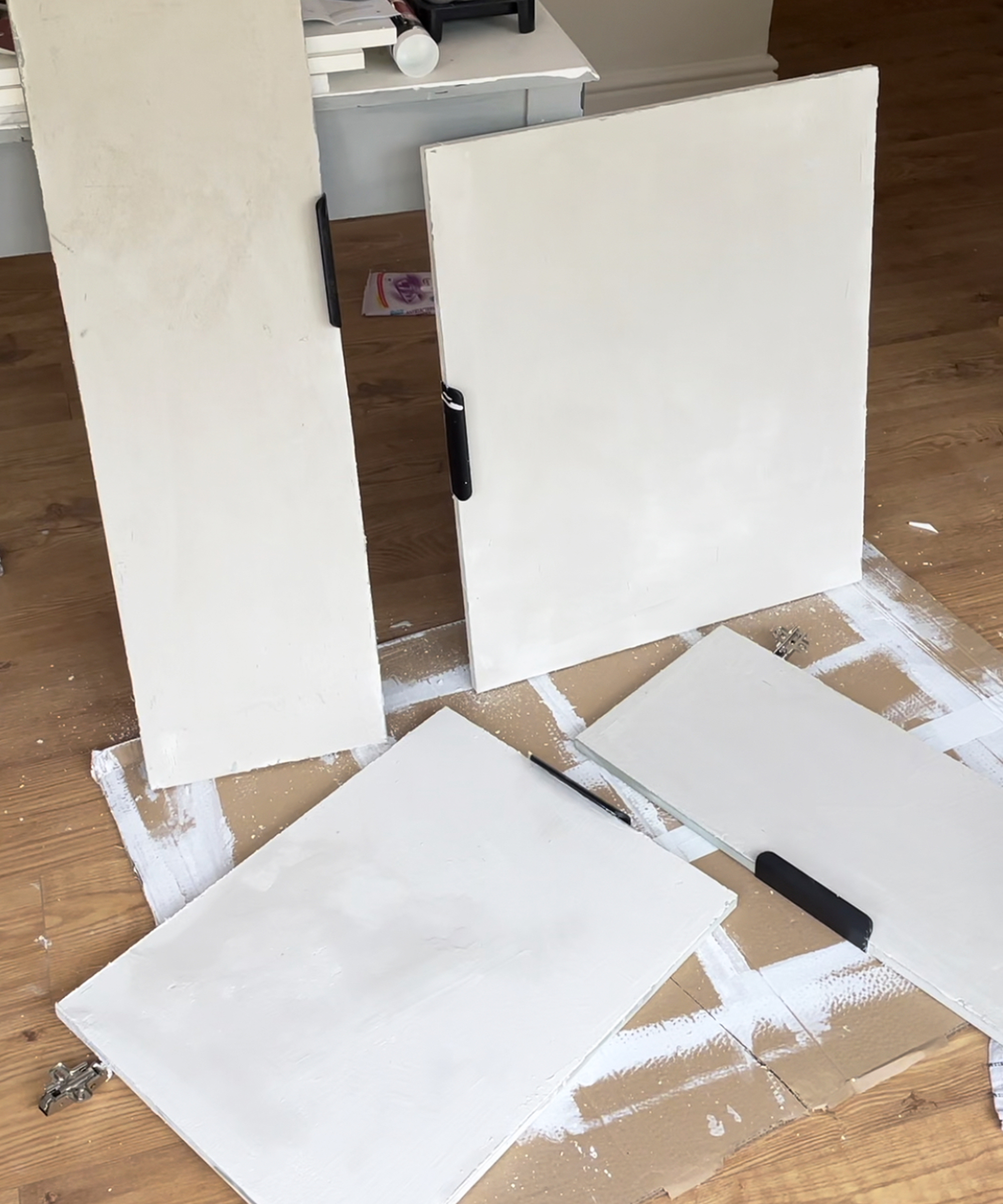
I wanted a textured finish on my cabinets with a variety of coarseness and patterns for interest so I deliberately didn’t sand the microcement on the cabinet fronts. If you want smooth, even coverage then I recommend lightly sanding, once dry, to knock off any lumps or imperfections.
I sanded the sides of the cabinet doors because I was mindful that adding more than paint layer-thick depth could result in issues in opening and closing, so I kept these smooth for functionality.
Wipe down after sanding to remove any dust before applying another coat of primer and leaving for the recommended amount of time.
Step 6: Apply the second coat of microcement
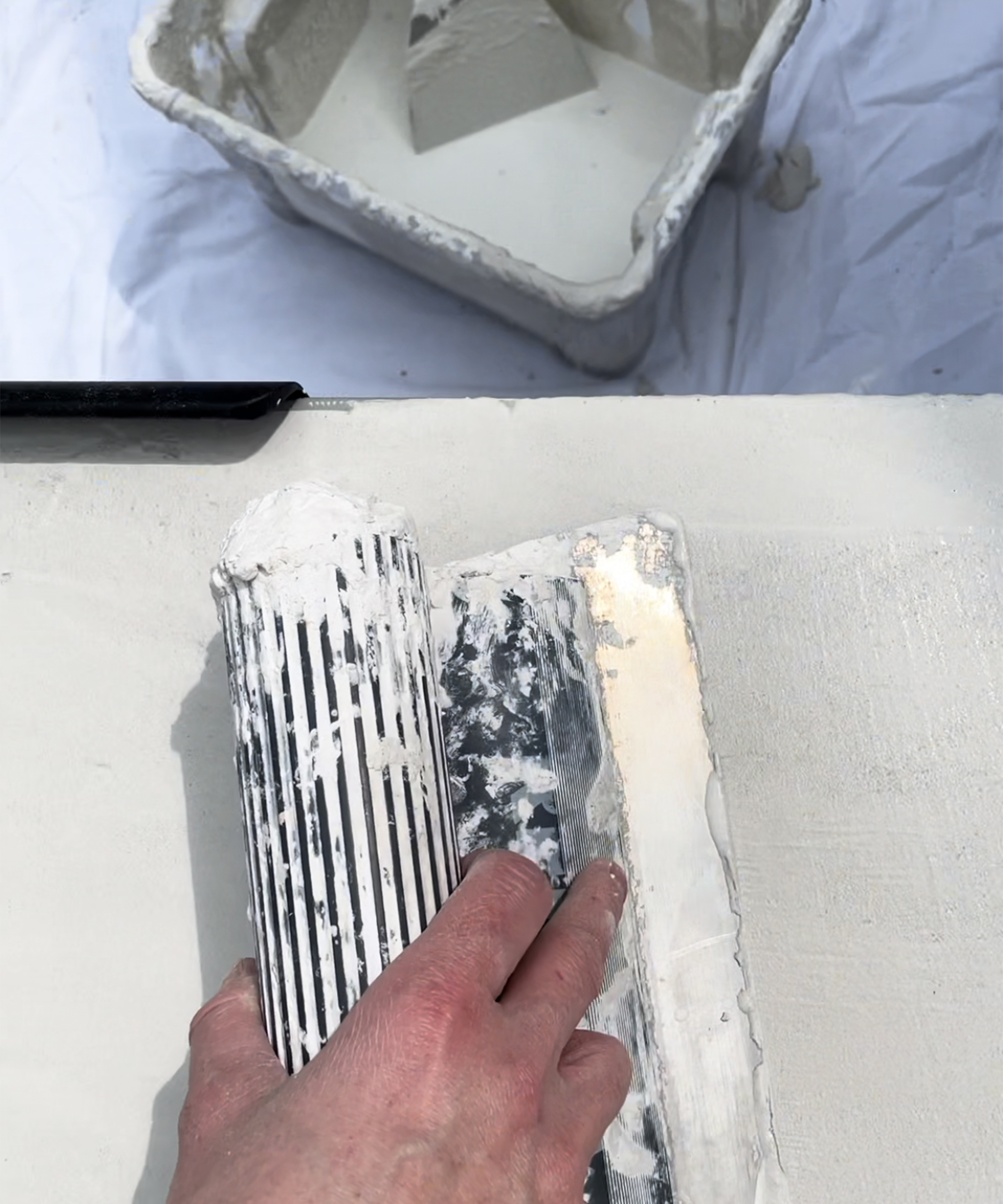
The second coat should be applied exactly as before. Work in sweeping motions with the spreader, applying firm pressure to compact the microcement onto the cabinet surface. Allow to dry and repeat the sanding process if required.
Top tip: Take the removable cabinet and drawer fronts outside to sand to avoid dust in your home. Where this is not possible, the base cabinet structures and infill panels for example, be sure to wear a mask and use a dust extraction method such as a vacuum attachment or dust collection bag.
Step 6: Seal the microcement cabinets
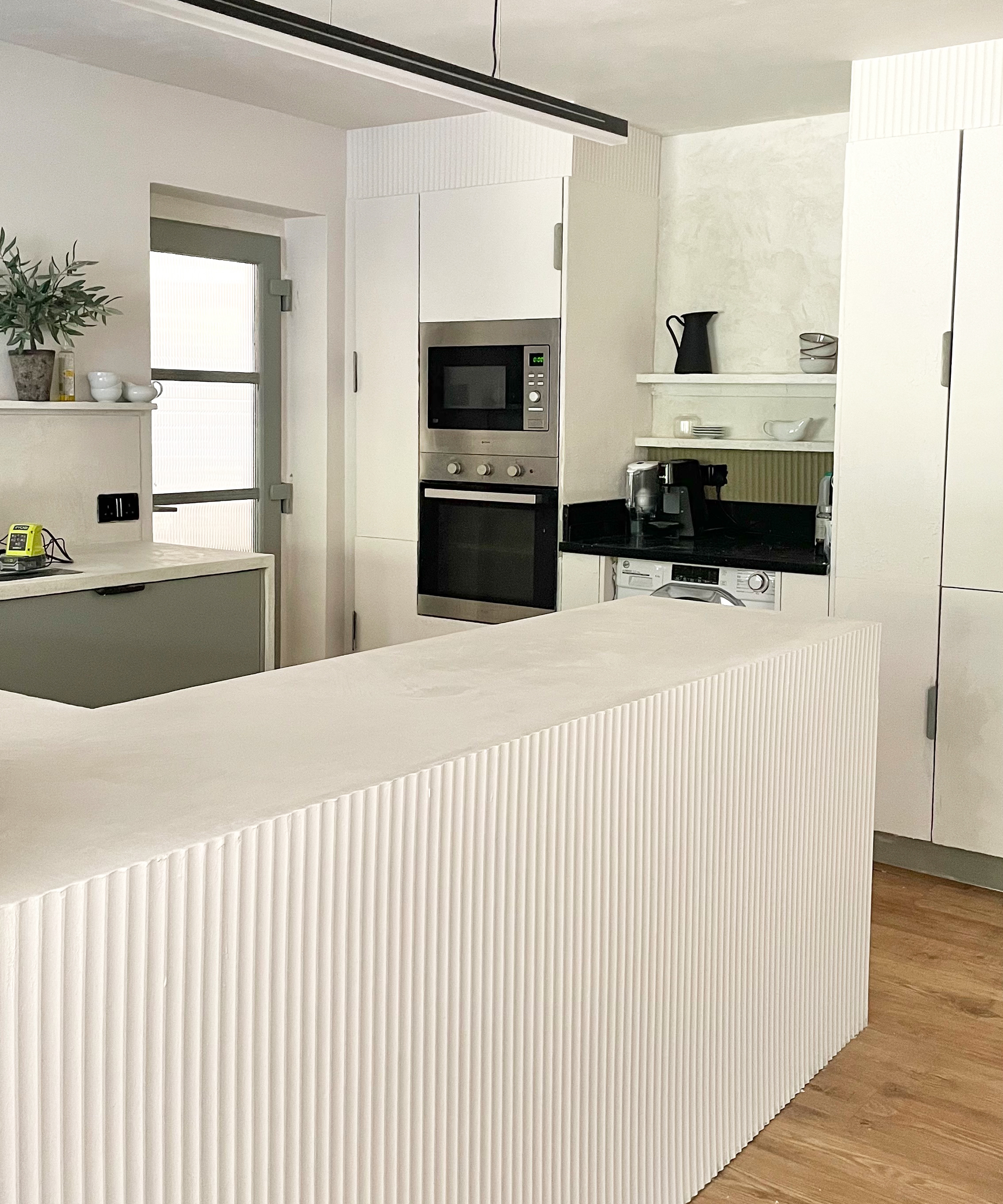
My kitchen, after being microcemented
I highly recommend sealing all microcement projects to ensure they are waterproof, stain-resistant and easy to clean. This is especially important for microcementing in the kitchen and bathroom which will be subjected to more than average levels of grease or dirt.
Allow sealant to fully dry before replacing the cabinets, then screw them back into the attaching hinges.
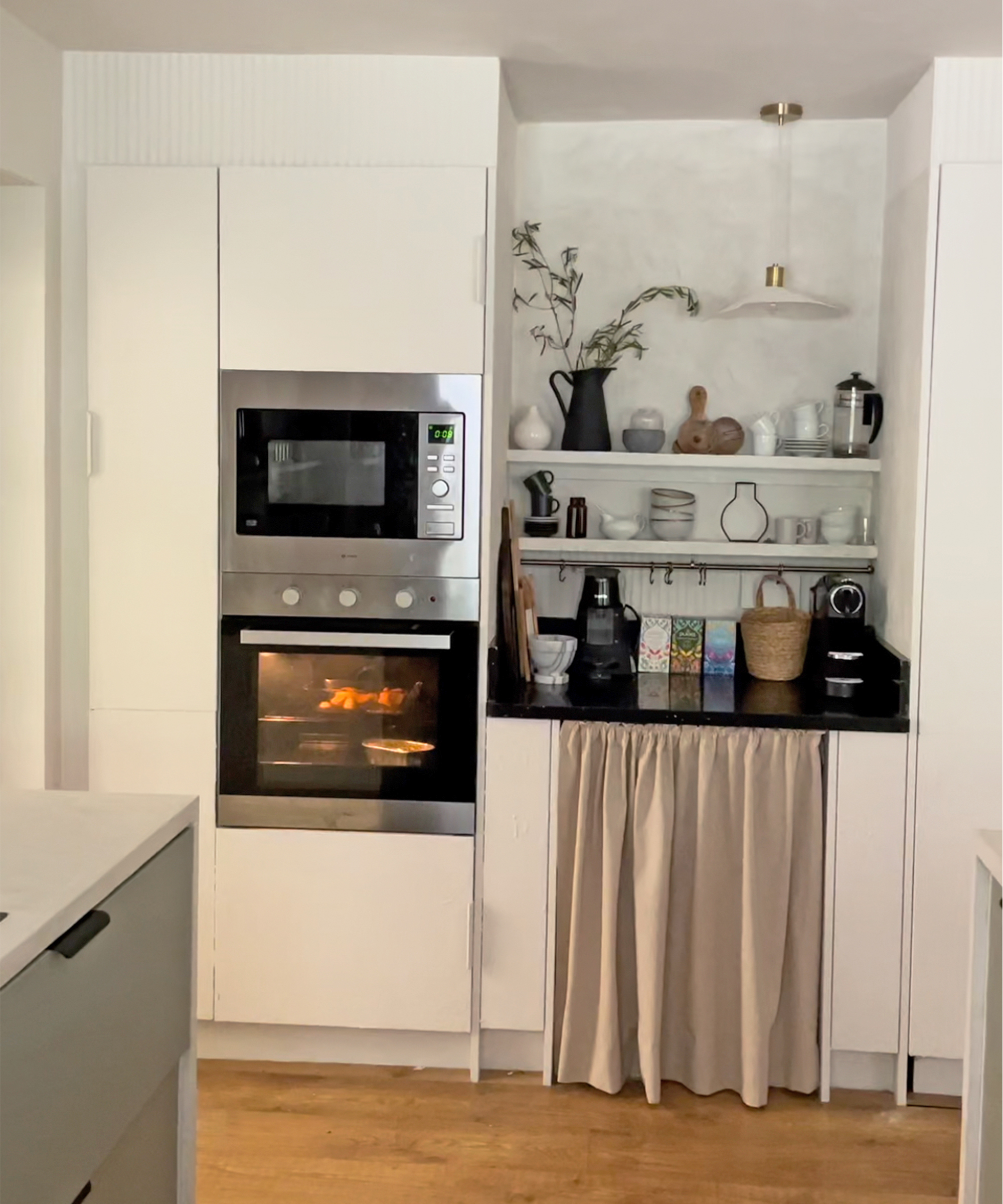
My kitchen, after being microcemented
Is microcementing kitchen cabinets cheaper than painting?
I've added up the costs and I'd have to say microcementing is around 10 times more expensive than painting (and similar to the costs of tiling) as good microcementing kits are considerably more pricey and need a good sealant, plus extra tools too. While microcementing is a fiddly process to get used to to begin with, once you've mastered it, microcementing kitchen cabinets, or any other surfaces (you can even microcement over tiles) doesn't take any longer than painting kitchen cabinets and is highly transformative.
Microcemented kitchen cabinets can be a practical option as well as an aesthetic choice – our experts have tried everything from the project above to microcementing a shower and the results have always been tough and good-looking. One word of warning, though, if you are in a rental, ask permission of your landlord/lady before you apply microcement to kitchen cabinets as it is not a process that can be reversed.
Get small space home decor ideas, celeb inspiration, DIY tips and more, straight to your inbox!

I'm happiest when I have either a drill or paintbrush in my hand! I specialise in room transformations on a budget and love experimenting with different styles and techniques which I share on my Instagram. I believe that your imagination, not your budget, should be the limiting factor when transforming a room and I love thinking of creative ways to build custom and bespoke-looking furniture using flatpacks or upcycle finds.
I also love writing and my home improvement blog (ClaireDouglasStyling.co.uk) is my passion project where I share creative ideas for interior styling and DIY tips and tutorials.